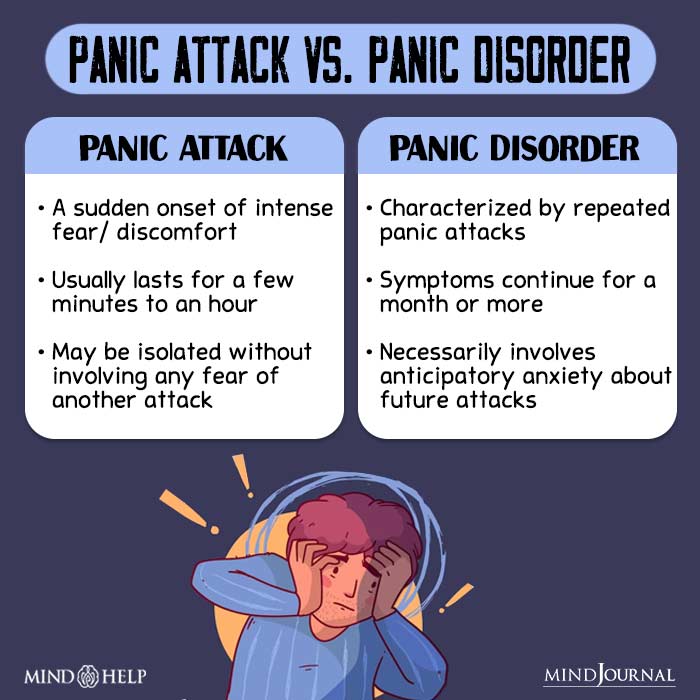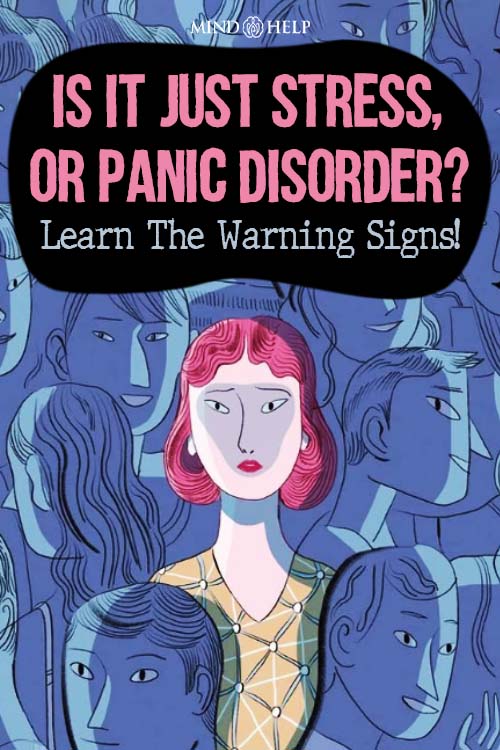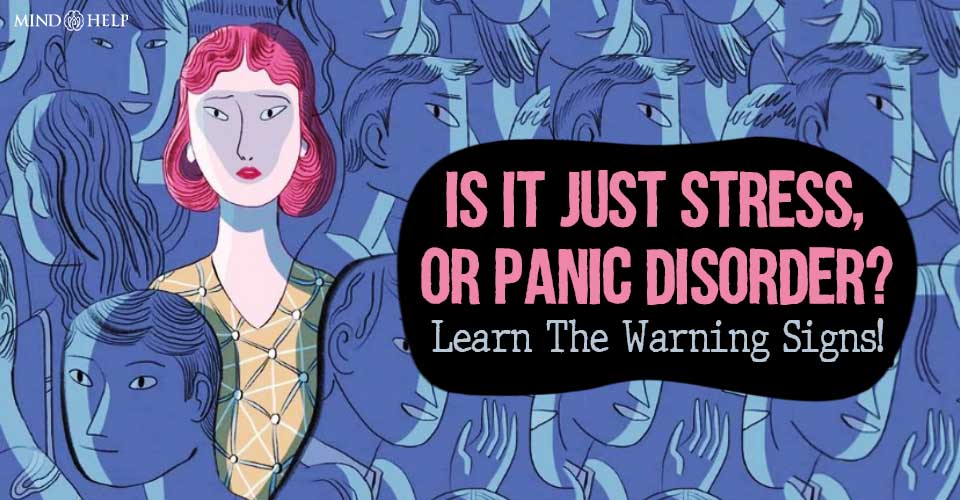Fear doesn’t always need a reason. Sometimes, it arrives uninvited, overwhelming, and completely out of nowhere. That’s what makes panic disorder so frightening, and so often misunderstood.
On International Panic Day 2025, we shine a light on a condition that silently affects millions, yet remains surrounded by stigma and confusion.
Whether you’ve experienced a panic attack yourself or watched someone else endure one, understanding panic disorder is a vital step toward promoting empathy, support, and mental well-being.
Understanding More About Panic
According to the DSM-5, a panic attack is defined as “an abrupt surge of intense fear or intense discomfort that reaches a peak within minutes.”
Panic disorder is more than just occasional panic attacks. It is characterized by at least a month of ongoing worry about having more attacks or their potential consequences.

A person with panic disorder may experience symptoms such as racing heart, shortness of breath, and sweating or chills. These attacks usually last between 5 to 20 minutes, but in severe cases, they can go on for more than an hour.
People with panic disorder mostly have these attacks out of the blue without any obvious cause, though sometimes they can be triggered by certain events or situations.
Read more here: Tired No Matter What? 6 Signs You Might Be Experiencing ‘Junk Sleep’
Recognizing the Signs And Symptoms Of Panic Disorder
Panic disorder is characterized by sudden, intense bouts of fear known as panic attacks. Panic disorder symptoms include:
Physical Symptoms
- Rapid heartbeat or palpitations
- Sweating
- Trembling or shaking
- Shortness of breath
- Chest pain
- Dizziness
- Nausea
- Chills or hot flashes
- Numbness or tingling sensation
- Muscle tension
- Upset stomach

Psychological Symptoms
- Intense fear
- Persistent worry about having another panic attack
- Hypervigilance
- Difficulty concentrating
- Feelings of helplessness
- Fear of dying
- Derealization i.e. feeling of unreality)
- Depersonalization i.e. being detached from oneself
Triggers and Pattern
The exact cause of panic disorder is not known, but here are a few common events or situations that might trigger panic disorder symptoms:
- Stressful life events – Major changes such as a job loss, divorce, or the death of a loved one.
- Medical conditions – Health issues like thyroid problems, heart conditions, or respiratory disorders.
- Substance use – Caffeine, alcohol, drugs, or withdrawal from these substances.
- Phobias – Specific fears, such as flying, heights, or crowded places.
- Genetics – History of panic disorder or other anxiety disorders in the family.
- Trauma – Past traumatic experiences such as being the victim of physical or sexual abuse or childhood abuse.
- Environmental factors – Stressful environments, including work or home life.
Patterns of Panic Disorder
often follows certain patterns:
- Unexpected attacks – Panic attacks occur without warning and without an obvious trigger.
- Frequent occurrences – Regularly experiencing panic attacks, often more than once a month.
- Anticipatory anxiety – Constant worry about the possibility of having another attack.
- Avoidance behavior – Avoiding situations or locations where past attacks have happened or where escape could be challenging.
- Episodic nature – Periods of frequent attacks may be followed by periods of fewer or no attacks.
- Progression over time – Symptoms may become more severe and debilitating without treatment.
- Comorbidity – Often occurs alongside other mental health conditions, such as depression or other anxiety disorders.
Seeking Help
An untreated panic condition can affect the quality of life, leading to difficulties in school or work. Even though panic disorder symptoms can be overwhelming and frightening, they can improve over time with proper treatment. Seeking help is the first step to improving the quality of your life. Here’s what you can do:
- Talk to a healthcare provider: Your primary care doctor can help you understand panic disorder symptoms and refer you to a mental health specialist if needed.
- See a therapist: Therapists, particularly those specializing in cognitive-behavioral therapy (CBT), can teach you techniques to manage and reduce panic attacks.
- Consider medication: In some cases, doctors may prescribe antidepressants or anti-anxiety drugs to help control symptoms.
- Join a support group: Connecting with others who understand what you’re going through can provide comfort and practical advice.
- Educate yourself: Learning more about panic disorder can help you understand your symptoms and reduce fear.
- Practice self-care: Regular exercise, a healthy diet, adequate sleep, and relaxation techniques like deep breathing or meditation can improve your overall well-being and reduce anxiety.
Treatment Options
Like other anxiety disorders, panic disorder is also treated using psychotherapy, medication (antidepressants or anti-anxiety drugs), or a combination of both. The duration of treatment depends on the severity of your condition and how well you respond to the treatment. Panic disorder treatment options include:
Psychotherapy
Psychotherapy, also known as talk therapy, involves therapeutic techniques designed to assist individuals in recognizing and altering unhealthy emotions, thoughts, and behaviors.
Cognitive behavioral therapy (CBT):
CBT teaches you to recognize and understand the thoughts and feelings that trigger panic attacks. Once you can identify these triggers, you and your therapist work together to change the way you react to them. You learn techniques to calm yourself down when you start feeling panicky, and you practice them until they become second nature.
This helps you feel more in control and less scared of having another panic attack. Over time, CBT can reduce the frequency and intensity of your panic attacks, making them much more manageable.
Exposure therapy
Exposure therapy is a type of treatment where you face your fears in a safe and controlled way. You work with a therapist to gradually expose yourself to situations or things that trigger your panic attacks. The idea is that by confronting your fears in a controlled way, you learn that you can handle them without having a panic attack.
Over time, exposure therapy can help you become less afraid of the things that trigger your panic attacks and more confident in your ability to cope with them.
Panic-focused psychodynamic psychotherapy (PFPP)
This therapy focuses on uncovering any unconscious thoughts or emotions that could be contributing to your panic disorder. By understanding these underlying issues, you can work with your therapist to address them and find healthier ways to cope with your anxiety.
Medication
There are two main types of medications for panic disorder: antidepressants and anti-anxiety drugs.
The most commonly prescribed class of antidepressants used for panic disorder are Selective Serotonin Reuptake Inhibitors (SSRIs). They include:
- Paxil (paroxetine)
- Prozac (fluoxetine)
- Celexa (citalopram)
- Zoloft (sertraline)
Benzodiazepines are the most commonly prescribed class of anti-anxiety medication for panic disorder. They’re useful for quickly reducing the intensity of panic attacks, but they’re usually prescribed for short-term relief due to the risk of dependency. They include:
- Ativan (lorazepam)
- Klonopin (clonazepam)
- Valium (diazepam)
- Xanax (alprazolam)
International Panic Day 2025: A Time to Break the Silence
Observed annually on June 18, International Panic Day is more than a quirky calendar event. In 2025, let’s reclaim it as a platform to educate, support, and empower. It’s a reminder that panic disorder is real, common, and treatable.
Let’s change the narrative. If someone you know is struggling, don’t dismiss it as overreacting or being dramatic. Panic disorder is a medical condition, and like any other illness, it deserves compassion and care.
Read more here: 10 Daily Habits To Improve Memory Retention
The Takeaway
Panic disorder doesn’t define a person, it’s a condition they have, not who they are. With proper treatment, support, and awareness, most people recover fully or see major improvements.
So this International Panic Day 2025, share this article. Talk about your own experiences. Reach out to someone who may be silently suffering. The more we talk about it, the less terrifying it becomes.








